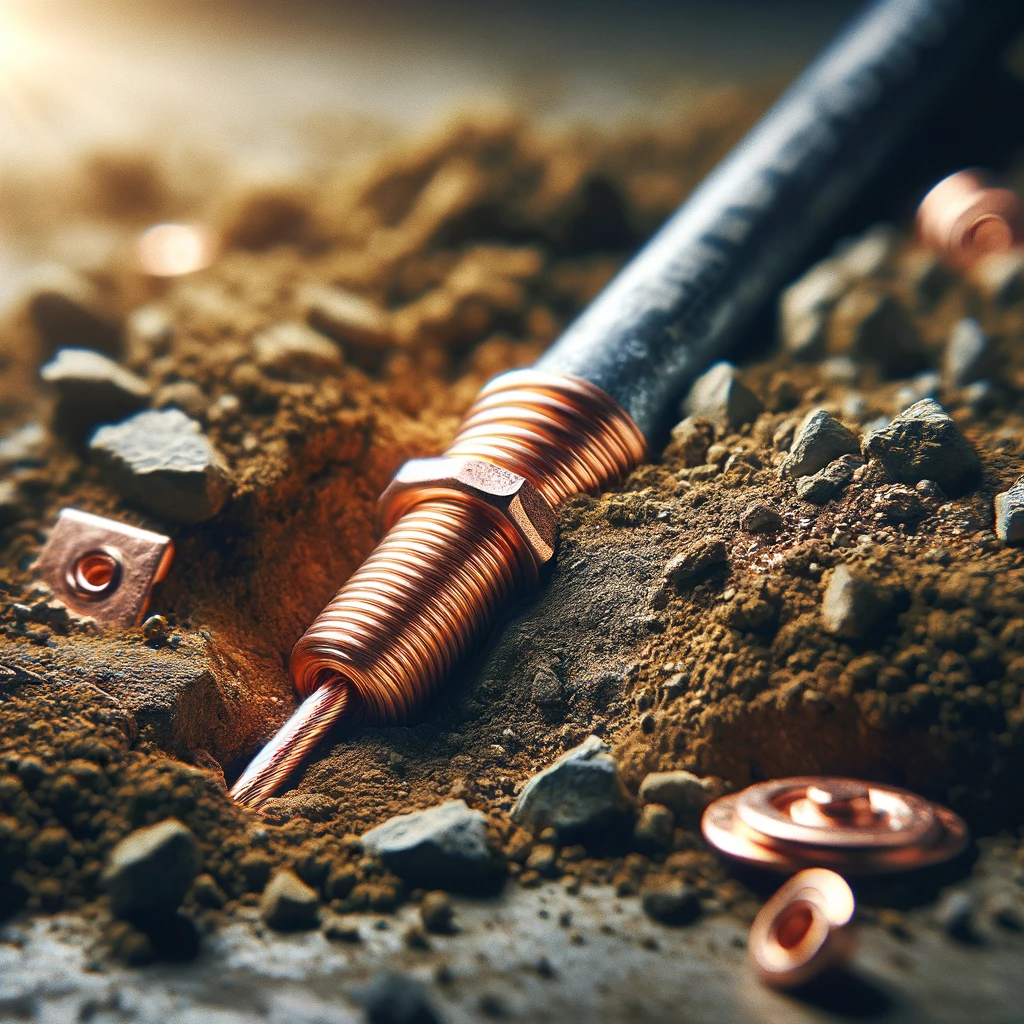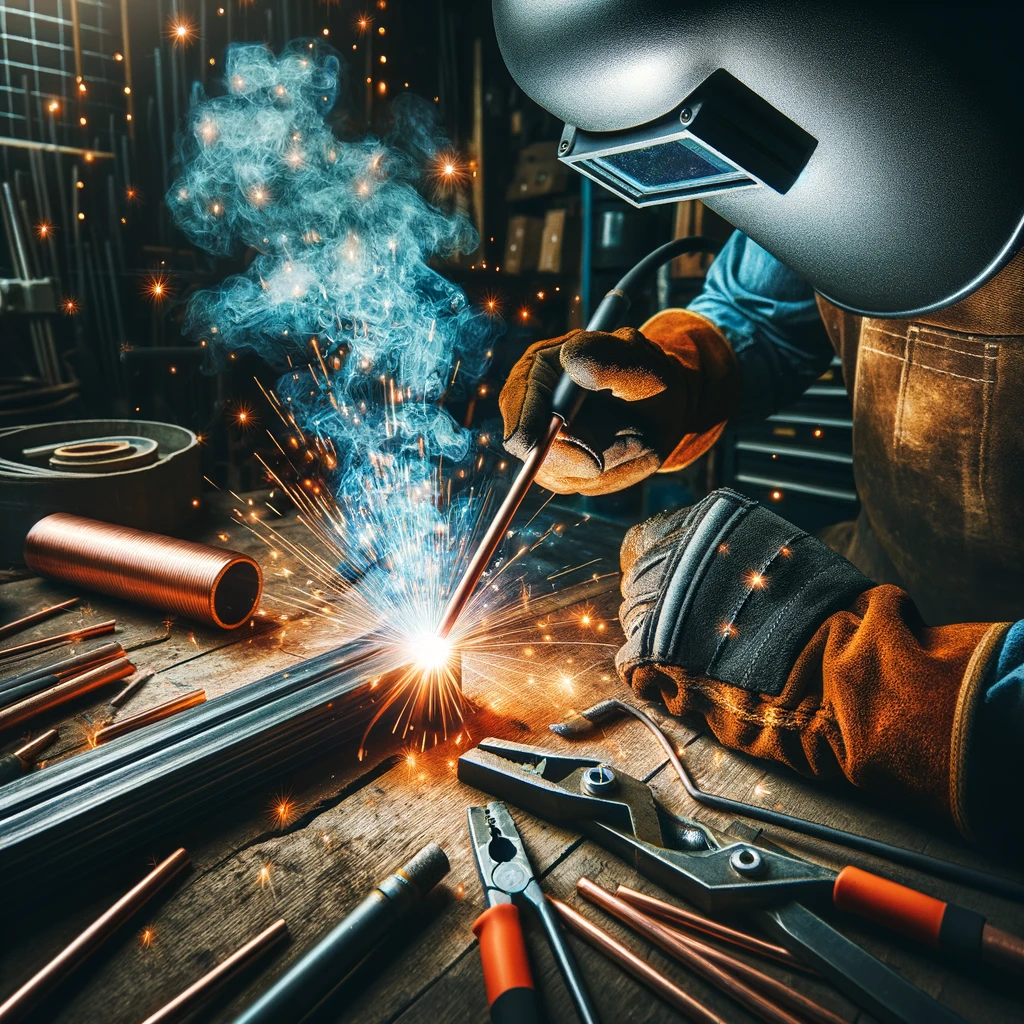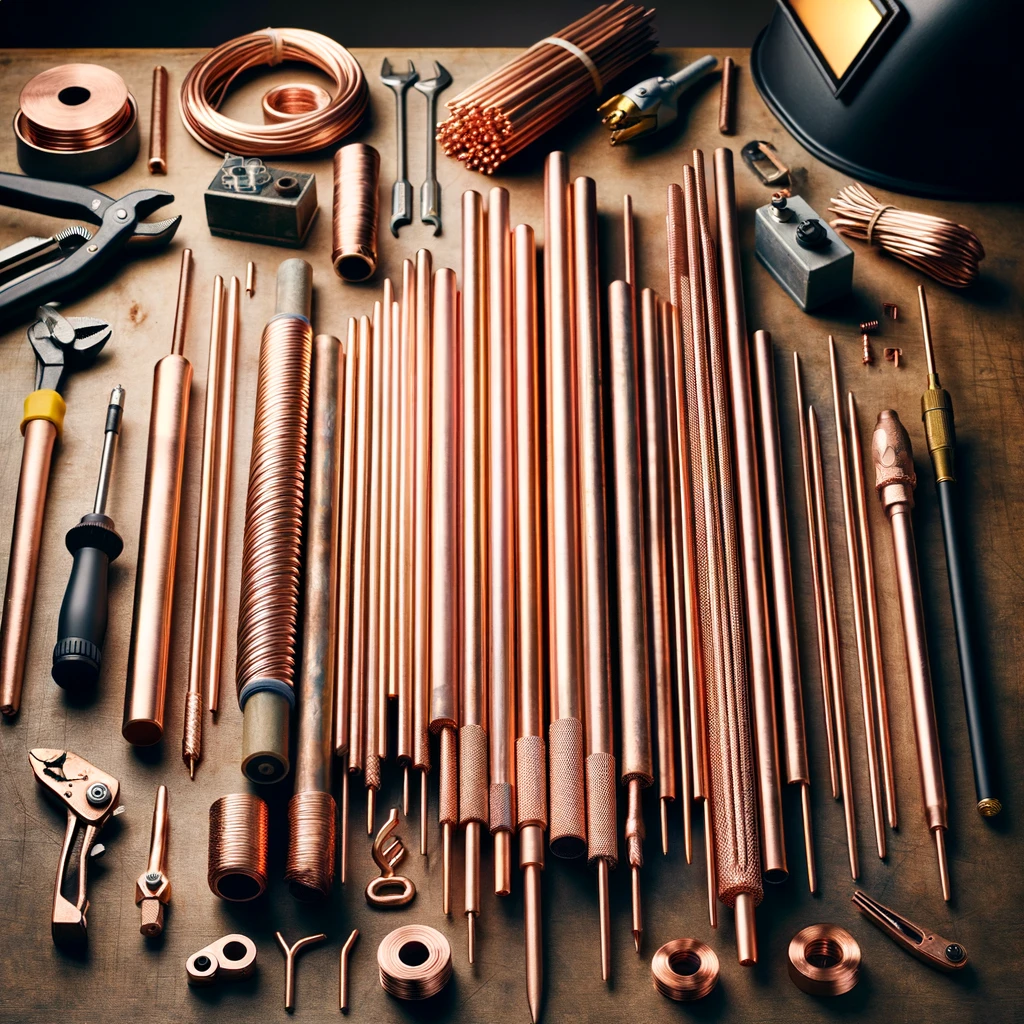Intro to Copper Rods
Copper, a versatile and crucial metal, plays a pivotal role in various technical and electrical applications. From grounding and brazing to welding, copper’s outstanding conductivity, durability, and resistance to corrosion make it an industry staple.
This post aims to delve into the multifaceted world of copper rods, exploring their applications, benefits, and practical usage tips. Whether you’re a professional in the industry or a DIY enthusiast, understanding the nuances of copper rods can significantly enhance the success and safety of your projects.
Our journey through the realm of copper will start with the basics, uncovering what copper rods are and why they’re so beneficial across different sectors.
From there, we’ll explore the critical role of copper grounding rods in ensuring electrical safety, delve into the precision art of brazing with copper brazing rods, and discuss the efficacy of copper in welding applications.
Each section will not only introduce you to the types and benefits of these copper rods but also equip you with practical advice on their installation, application, and selection for your specific needs. Join us as we unlock the secrets to mastering copper applications, ensuring your projects shine with efficiency and reliability.
Contact us: service@drsengineering.ae for any equipment or service needs.
Understanding Copper Rods
Copper rods are elongated, cylindrical bars made from copper, known for their excellent electrical and thermal conductivity. These rods find extensive use across a range of industrial and residential applications, from electrical grounding systems to metalworking and even as structural components.
There are several types of copper rods, each tailored for specific uses.
For example, pure copper rods are often used in electrical applications due to their high conductivity, while alloyed copper rods, mixed with elements like zinc or tin, offer enhanced strength and wear resistance for mechanical uses.
The benefits of using copper rods are numerous.
Firstly, their high conductivity makes them ideal for electrical grounding applications, ensuring safety and efficiency in power systems.
Secondly, copper’s durability means that products made with copper rods can withstand extensive wear and tear, leading to a longer lifespan and reduced maintenance costs.
Lastly, copper’s corrosion resistance ensures that it can endure even harsh environmental conditions without degrading, making copper rods a reliable choice for outdoor or marine applications. These advantages, combined with copper’s natural antimicrobial properties and recyclability, make copper rods a versatile and sustainable material choice for a wide array of projects.
Also Read: Understanding DeviceNet and Industrial Networking
The Essentials of Copper Grounding Rods

Grounding rods serve a crucial role in electrical systems, acting as a safety measure to protect against electrical overload, lightning strikes, and to ensure a stable reference point for electrical systems.
They achieve this by providing a direct physical connection to the earth, which safely disperses potentially dangerous electrical currents into the ground, thereby protecting both equipment and personnel from electrical hazards.
Copper is the preferred material for grounding rods primarily due to its outstanding electrical conductivity, which ensures efficient dissipation of electrical charges into the earth.
Additionally, copper’s excellent resistance to corrosion significantly extends the life of grounding rods, even when buried underground or used in various environmental conditions.
This durability against corrosion helps maintain the integrity of the electrical grounding system over time, requiring less maintenance and replacement compared to other materials.
Installing Copper Grounding Rods
When installing copper grounding rods, it’s essential to follow certain best practices to ensure their effectiveness and safety. First, choose a location where the rod can be driven deep into the ground, ideally reaching moist soil for better conductivity.
The rod should be installed vertically, or at a slight angle if necessary, using a hammer or a grounding rod driver. It’s important to ensure that the connection between the grounding wire and the rod is secure and corrosion-resistant, often achieved with specific clamps or exothermic welding.
Finally, local codes and standards regarding grounding rod installation should always be followed to ensure compliance and safety. These installation tips, combined with the natural advantages of copper, make copper grounding rods an indispensable component of any safe electrical system.
Diving into Copper Brazing Rods
Brazing is a metal-joining process that involves melting a filler metal between two or more close-fitting parts to form a strong, sealed joint. Unlike welding, brazing doesn’t melt the base metals; instead, it uses a lower melting point filler metal, which flows into the joint by capillary action.
This method allows for joining dissimilar metals and causes less thermal distortion in the base materials, making it ideal for delicate or precision assemblies.
Copper brazing rods are popular due to their excellent conductivity and corrosion resistance. They come in various types, tailored for specific applications.
For copper-to-copper connections, phosphorus-copper brazing rods are commonly used as they don’t require additional flux for joining copper materials.
However, for brazing copper alloys or other metals, flux-coated copper brazing rods or bare rods with separate flux application might be necessary to prevent oxidation and ensure a clean join.
For successful brazing with copper rods, a few key techniques are vital. Firstly, precise temperature control is essential. The workpiece and the rod must reach the filler metal’s flow temperature without overheating the base metals.
Proper flux usage is also crucial; flux cleans the metal surfaces and prevents oxidation during the brazing process. Before brazing, joint preparation is vital—cleaning the metal surfaces thoroughly and ensuring a tight fit between the parts will facilitate capillary action and create a stronger bond.
Following these best practices ensures durable and conductive joins when using copper brazing rods in various applications.
Also Read: Master the Art of Laser Welding
Welding with Copper Rods

Copper welding rods are specifically designed for joining copper materials and sometimes used with other types of metal. These rods are commonly utilized in applications requiring high electrical conductivity and corrosion resistance, such as electrical contacts and heat exchangers.
There are several types of copper welding rods, including those with added deoxidizers for better stability in the weld pool and others formulated for specific alloy compatibility.
The primary benefits of using copper welding rods include their exceptional thermal conductivity and resistance to corrosion. These characteristics make them ideal for projects where maintaining the integrity of the electrical and thermal conductivity of the joint is critical.
Moreover, copper’s heat resistance ensures durability and longevity of the welds even under extreme conditions.
For successful welding with copper rods, consider the following tips:
- Welder Settings: Adjust your welder settings to accommodate the high thermal conductivity of copper. This might mean higher amperage or slower welding speeds to ensure proper heat penetration.
- Rod Selection: Choose the correct type of copper welding rod based on the copper alloys you’re joining. Pay attention to the rod’s compatibility with base metals to prevent weld defects.
- Pre-Weld Preparation: Clean the copper thoroughly before welding. Copper oxidizes quickly, and any contamination can lead to poor weld quality.
- Heat Control: Managing heat input is crucial when welding copper. Use heat sinks or preheating methods as necessary to control the temperature and reduce warping or distortion.
- Post-Weld Treatment: After welding, allow the joint to cool slowly to avoid cracking. Consider post-weld heat treatments for stress relief, especially for critical applications.
By following these tips and understanding the unique properties of copper and copper welding rods, welders can achieve strong, conductive, and durable joints in their copper welding projects.
Selecting the Right Copper Rod for Your Project
When selecting the right copper rod for your project, it’s crucial to consider a few key factors to ensure optimal performance and durability.
First, think about the specific application of the copper rod. Grounding rods, brazing rods, and welding rods each serve distinct purposes and are suited to different tasks. The type of copper alloy used in the rod also matters, as different alloys offer varying levels of conductivity, strength, and corrosion resistance.
Additionally, the environment where the rod will be used plays a significant role. Factors such as exposure to moisture, chemicals, or extreme temperatures can influence the choice of copper rod.
Copper grounding rods are primarily used in electrical grounding systems to provide a path for electrical discharge into the earth.
These rods are valued for their high electrical conductivity and corrosion resistance, making them ideal for safeguarding buildings and electrical systems against lightning strikes and power surges. Copper grounding rods must be durable and able to withstand environmental conditions without degrading.
Copper brazing rods are used in the brazing process, which involves joining two metals by melting and flowing a filler metal into the joint.
Copper brazing rods are chosen for their ability to create strong, leak-proof joints, especially in copper-to-copper connections or with other non-ferrous metals. They require precise heat control and are often used with a flux to prevent oxidation during the brazing process.
Welding rods made from copper are designed for welding projects that require high thermal and electrical conductivity.
These rods are beneficial for welding copper materials in applications such as electrical contacts and heat exchangers. Selecting the right welding rod depends on the specific copper alloys being joined and the desired characteristics of the weld, such as strength or resistance to corrosion.
In summary, when choosing a copper rod, consider the application, copper alloy, and environmental conditions.
Grounding rods are essential for electrical safety, brazing rods for joining metals with strong, sealed joints, and welding rods for projects requiring durable welds with high conductivity.
By understanding these distinctions and assessing your project’s specific needs, you can select the most appropriate copper rod to ensure success and longevity.
Contact us: service@drsengineering.ae for any equipment or service needs.
Concluding our Guide to Copper Rods
Choosing the right copper rod is vital for the success of your project, whether you’re grounding an electrical system, brazing metal components, or engaging in specialized welding tasks.
Each application demands a specific type of copper rod, tailored to offer the best in conductivity, durability, and corrosion resistance.
By understanding the distinct properties and uses of copper grounding rods, brazing rods, and welding rods, you can make informed decisions that enhance the performance and longevity of your work.
We encourage you to apply the insights and recommendations outlined in this guide as you select copper rods for your upcoming projects.
Consider the unique requirements of your task, including the environmental conditions and the specific copper alloy needed. With the right copper rod in hand and a clear understanding of its proper application, you’re well-equipped to achieve outstanding results.
Embrace the versatility and efficiency of copper in your projects to not only meet but exceed your project goals.


